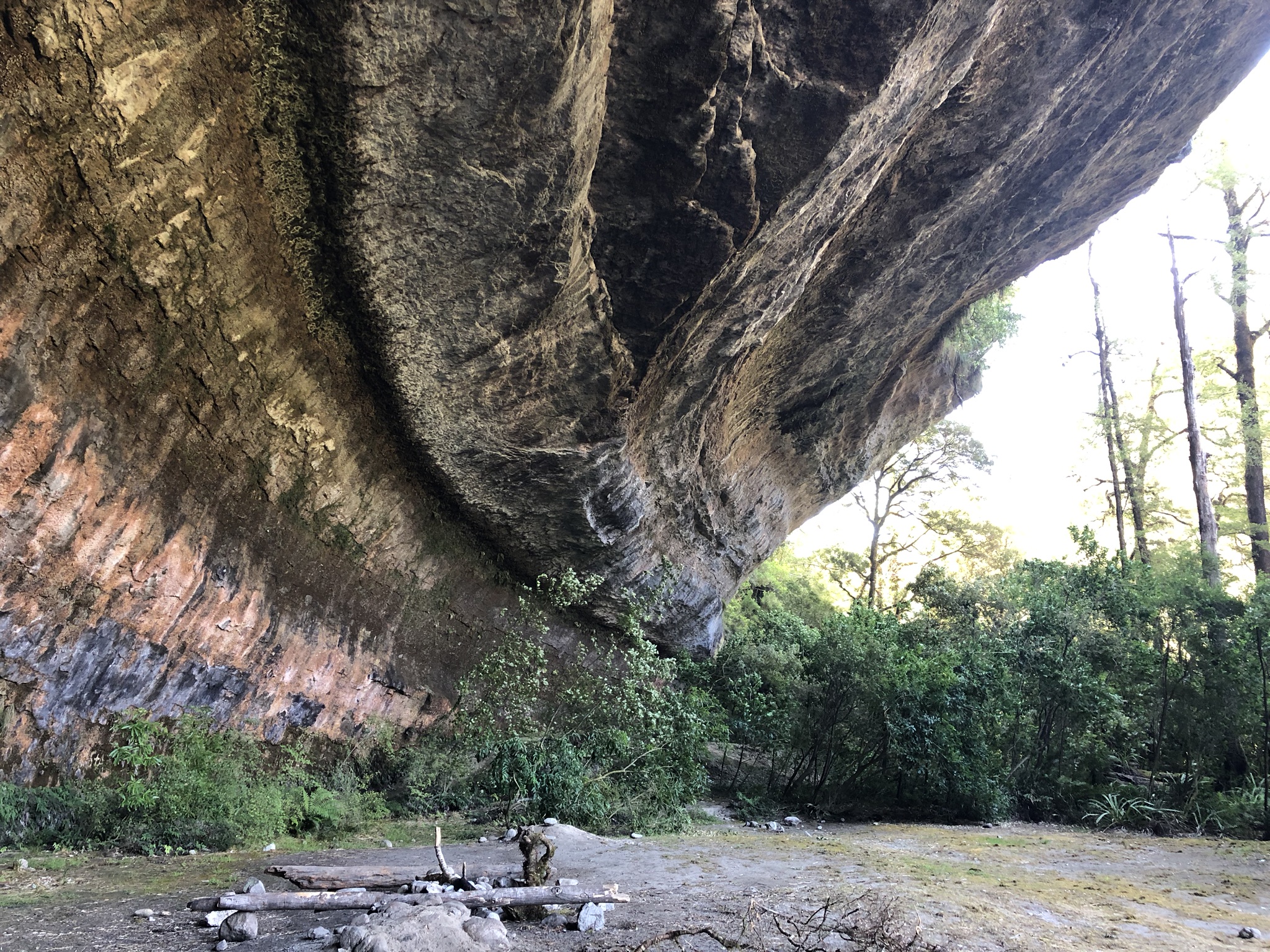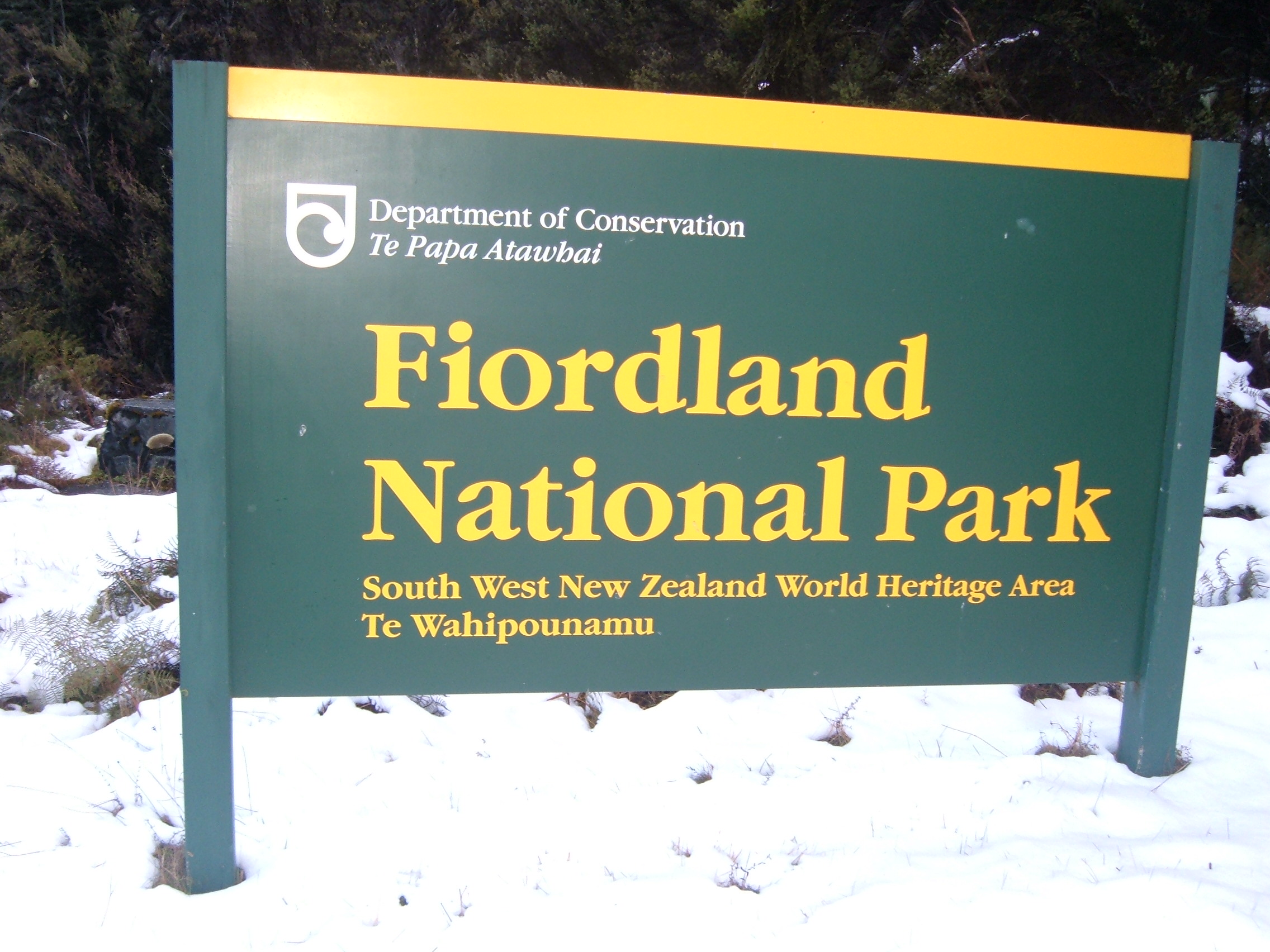|
Ballroom Overhang
The Ballroom Overhang is a large limestone outcrop on the Fox River in Paparoa National Park, in the Buller District of New Zealand. The Ballroom Overhang provides a sheltered place for resting or overnight camping. The overhang is at its highest point, long, and at its widest point. In suitable conditions, the hike to the Ballroom Overhang and back can be made as return day trip from the coast road. However, it involves multiple river crossings, and these are likely to be impassable during or after heavy rain. The route to the Ballroom Overhang is classified as an advanced tramping track by the Department of Conservation. The Ballroom Overhang can be reached from the Inland Pack Track The Inland Pack Track is a trail in the Paparoa National Park on West Coast of New Zealand. The full length of the trail commences at the Punakaiki River in the south, and ends at the mouth of the Fox River in the north. It takes two or thre ..., and is approximately upstream from ... [...More Info...] [...Related Items...] OR: [Wikipedia] [Google] [Baidu] |
Paparoa National Park
Paparoa National Park is on the west coast of the South Island of New Zealand. The park was established in 1987 and encompasses 430 km2 (166 sq mi). The park ranges from on or near the coastline to the peaks of the Paparoa Range. A separate section of the park lies to the north and is centred at Ananui Creek. The park protects a limestone karst area. The park contains several caves, of which Metro Cave / Te Ananui Cave is a commercial tourist attraction. The majority of the park is forested with a wide variety of vegetation. The park was the site of the 1995 Cave Creek disaster where fourteen people died as a result of the collapse of a scenic viewing platform. The Paparoa Track, one of New Zealand's Great Walks, runs through the park. The small settlement of Punakaiki, adjacent to the Pancake Rocks and Blowholes tourist attraction, lies on the edge of the park. The park is also located near the towns of Westport, Greymouth, and Barrytown. Location Paparoa N ... [...More Info...] [...Related Items...] OR: [Wikipedia] [Google] [Baidu] |
Fox River (Buller)
The Fox River (originally the Potikohua River) is a river in the Buller District of New Zealand. It arises in the Paparoa Range near Mount Dewar and flows north-west through the Paparoa National Park to the Tasman Sea at Woodpecker Bay. The river passes through a spectacular gorge. The northern branch of the river has limestone caves containing stalactite and stalagmite formations. Toponymy The river was named after Bill Fox, a gold prospector. The Māori name Potikohua, comes from poti, a cooking basket, and kohua, steaming oven. Description The Fox River has its origins high in the Paparoa Range, and flows in a north-west direction through the limestone syncline. The river passes through deep limestone canyons on its way to the coast. One of the main tributaries is Dilemma Creek. The river valley is characterised by limestone escarpments, with steep sloping faces beneath. The forest type on these slopes is variable in height and composition. Common species include th ... [...More Info...] [...Related Items...] OR: [Wikipedia] [Google] [Baidu] |
Buller District
Buller District is one of 53 districts of New Zealand, and is within the West Coast Region. It covers Westport, Karamea, Reefton and Inangahua Junction. Buller District's overall land area is . The district is administered by the Buller District Council with the seat in Westport, in which 45% of the district's population live. History It is understood by the carbon dating of Umu (ovens) that the Maori people settled in this region some 700 years ago. The district takes its name from the Buller River, itself named for Charles Buller, a Member of Parliament in the United Kingdom of Great Britain and Ireland (UK) and director of the New Zealand Company, a UK-based company established in the early 19th century with a royal charter supporting colonisation efforts of New Zealand. During the period 1853 to 1876, the current area of Buller District was administered as part of Nelson Province. With the Abolition of Provinces Act 1876, much of the current area of Buller Distri ... [...More Info...] [...Related Items...] OR: [Wikipedia] [Google] [Baidu] |
Department Of Conservation (New Zealand)
The Department of Conservation (DOC; Māori: ''Te Papa Atawhai'') is the public service department of New Zealand charged with the conservation of New Zealand's natural and historical heritage. An advisory body, the New Zealand Conservation Authority (NZCA) is provided to advise DOC and its ministers. In addition there are 15 conservation boards for different areas around the country that provide for interaction between DOC and the public. Function Overview The department was formed on 1 April 1987, as one of several reforms of the public service, when the '' Conservation Act 1987'' was passed to integrate some functions of the Department of Lands and Survey, the Forest Service and the Wildlife Service. This act also set out the majority of the department's responsibilities and roles. As a consequence of Conservation Act all Crown land in New Zealand designated for conservation and protection became managed by the Department of Conservation. This is about 30% of New ... [...More Info...] [...Related Items...] OR: [Wikipedia] [Google] [Baidu] |
Inland Pack Track
The Inland Pack Track is a trail in the Paparoa National Park on West Coast of New Zealand. The full length of the trail commences at the Punakaiki River in the south, and ends at the mouth of the Fox River in the north. It takes two or three days to complete the track. History There was no formed road along the Punakaiki coast until the late 1920s. Early European explorers navigating the coast encountered sheer cliffs at Te Miko, navigable only by climbing ladders totalling 46 feet high (or so Haast estimated) made of harakeke and rotting rātā vine. Charles Heaphy noted in 1846 that "…as several of the rotten steps gave way under our feet, our position was far from being pleasant. A number of cormorants and other marine birds, too, that had their nests in the crevices of the rock were screaming and wheeling about us at the intrusion." During the gold rush of the 1860s these were replaced by chain ladders, soon known as "Jacob's Ladder", but the wooden rungs were des ... [...More Info...] [...Related Items...] OR: [Wikipedia] [Google] [Baidu] |
Rock Formations Of New Zealand
Rock most often refers to: * Rock (geology), a naturally occurring solid aggregate of minerals or mineraloids * Rock music, a genre of popular music Rock or Rocks may also refer to: Places United Kingdom * Rock, Caerphilly, a location in Wales * Rock, Cornwall, a village in England * Rock, County Tyrone, a village in Northern Ireland * Rock, Devon, a location in England * Rock, Neath Port Talbot, a location in Wales * Rock, Northumberland, a village in England * Rock, Somerset, a location in Wales * Rock, West Sussex, a hamlet in Washington, England * Rock, Worcestershire, a village and civil parish in England United States * Rock, Kansas, an unincorporated community * Rock, Michigan, an unincorporated community * Rock, West Virginia, an unincorporated community * Rock, Rock County, Wisconsin, a town in southern Wisconsin * Rock, Wood County, Wisconsin, a town in central Wisconsin Elsewhere * Corregidor, an island in the Philippines also known as "The Rock" * Jamaica, an ... [...More Info...] [...Related Items...] OR: [Wikipedia] [Google] [Baidu] |
Landforms Of The West Coast Region
A landform is a natural or anthropogenic land feature on the solid surface of the Earth or other planetary body. Landforms together make up a given terrain, and their arrangement in the landscape is known as topography. Landforms include hills, mountains, canyons, and valleys, as well as shoreline features such as bays, peninsulas, and seas, including submerged features such as mid-ocean ridges, volcanoes, and the great ocean basins. Physical characteristics Landforms are categorized by characteristic physical attributes such as elevation, slope, orientation, stratification, rock exposure and soil type. Gross physical features or landforms include intuitive elements such as berms, mounds, hills, ridges, cliffs, valleys, rivers, peninsulas, volcanoes, and numerous other structural and size-scaled (e.g. ponds vs. lakes, hills vs. mountains) elements including various kinds of inland and oceanic waterbodies and sub-surface features. Mountains, hills, plateaux, and plains are t ... [...More Info...] [...Related Items...] OR: [Wikipedia] [Google] [Baidu] |
Tourist Attractions In The West Coast Region
Tourism is travel for pleasure or business; also the theory and practice of touring (other), touring, the business of attracting, accommodating, and entertaining tourists, and the business of operating tour (other), tours. The World Tourism Organization defines tourism more generally, in terms which go "beyond the common perception of tourism as being limited to holiday activity only", as people "travelling to and staying in places outside their usual environment for not more than one consecutive year for leisure and not less than 24 hours, business and other purposes". Tourism can be Domestic tourism, domestic (within the traveller's own country) or International tourism, international, and international tourism has both incoming and outgoing implications on a country's balance of payments. Tourism numbers declined as a result of a strong economic slowdown (the late-2000s recession) between the second half of 2008 and the end of 2009, and in consequence of t ... [...More Info...] [...Related Items...] OR: [Wikipedia] [Google] [Baidu] |




.jpg)
